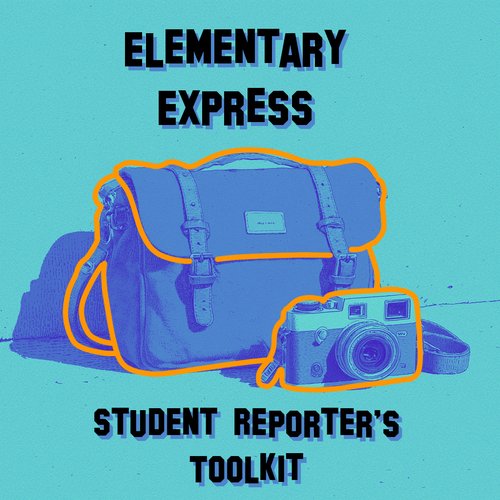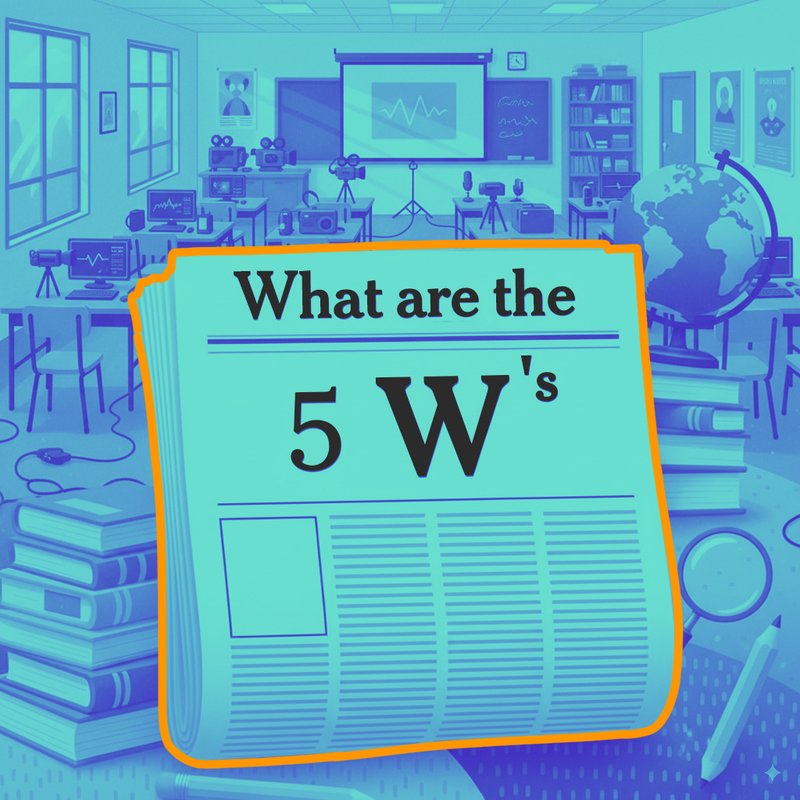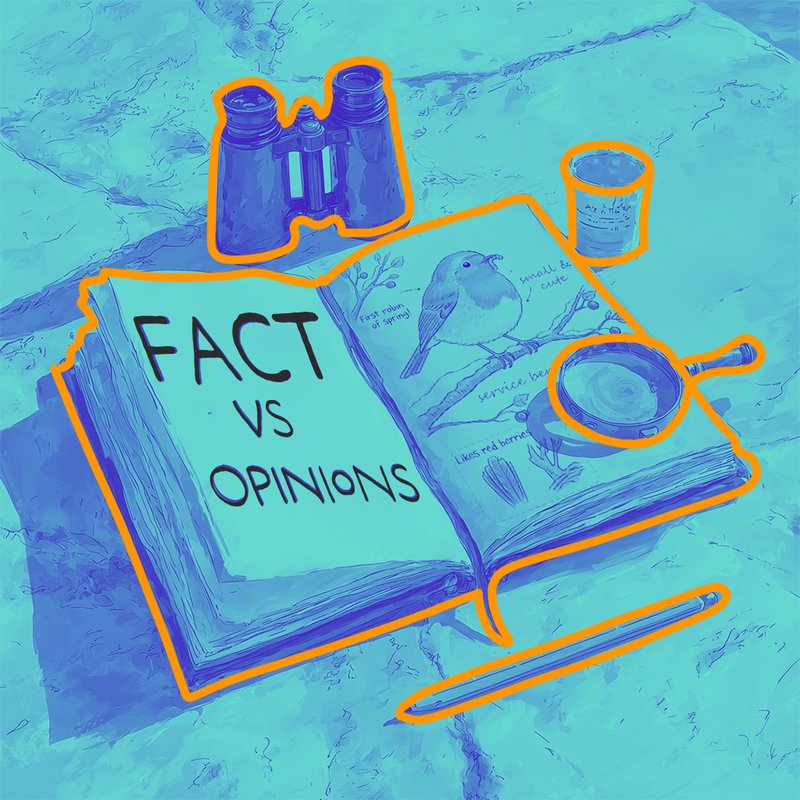
PBS News Student Reporting Labs series of lessons all about teaching elementary students the basics of storytelling and journalism. This toolkit contains adapted lessons from StoryMaker resources for an elementary audience. The toolkit explores the difference between facts and opinions, primary and secondary sources, and how to ask strong questions with the 5 W’s (who, what, where, when, and why). Each lesson is designed to facilitate classroom engagement and discussion that encourage critical thinking, media literacy, and civic connections.

This lesson will teach students how to ask strong questions with the 5 W’s. Students will be challenged to think critically and practice asking interview questions using the 5 W’s framework.

This lesson will teach students the difference between facts and opinions. Students will use visual examples and practice to discern the difference between the two.

This lesson teaches students to analyze sources to gain accurate information for research. Students will use interactive activities to learn the difference between two types of sources.
A set of moral principles based on standards of right and wrong, usually in terms of obligations, benefits to society, fairness, or specific virtues.
Journalism is the activity of gathering, assessing, creating, and presenting news and information.
Belief that someone or something is reliable, good, honest, effective, etc.
Prejudice in favor of or against one thing, person, or group compared with another, usually in a way considered to be unfair.
An obligation or willingness to accept responsibility or to account for one's actions.
Media refers to all electronic or digital means and print or artistic visuals used to transmit messages.
All forms of media created with the purpose of informing the public and delivering news through specific mediums such as radio and broadcast stations, digital news organizations and others.
Investigating and explaining, in a critical and clear-eyed way, how people try to solve widely shared problems. Solutions journalism focuses on responses to problems.
Awareness of the elements of environment through physical sensation or intuitive cognition. A capacity for comprehension and understanding.
A conversation between two or more people where the purpose is to gather information and facts. The interviewer asks questions and the interviewee provides information based on their knowledge about a specific topic or issue.
An account of past or current events. In journalism, stories are presented with a combination of people, facts, and typically includes a beginning, middle and end.
A person or other physical being in a narrative. Stories are made up of different characters who provide information and help shape the narrative with their knowledge, experience and perspective.
The availability of facts or information indicating whether a belief or proposition is true or valid
Something that is known or proved to be true.
A view or judgment formed about something, not necessarily based on fact or knowledge.
Something that is accepted as true or as certain to happen, without proof.
An investigation into and study of sources in order to establish facts and reach new conclusions.
A source is an individual, company, document or more that can provide information to fuel a new story. In order for a story to be considered verified and to maintain a reputation as a news outlet, it is important to have a credible source.
Free from mistake or error. Coverage of topics and facts in appropriate detail.
The process of verifying the accuracy of a piece of information.
A desire to learn and know about something or anything.
Historical inquiry is based on materials left from the past that can be studied and analyzed. (NCSS D2.His.9.9-12 - D2.His.13.9-12)
Whether students are constructing opinions, explanation, or arguments, they will gather information from a variety of sources and evaluate the relevance of that information. (NCSS D3.1.9-12 - D3.2.9-12)
Journalism
Media Literacy
Education
Digital Literacy/Citizenship
History
Beginner
Post It Notes
White board, chalkboard or other visual board
Markers
Slides
Projector
Internet
Notebook
1-3 weeks